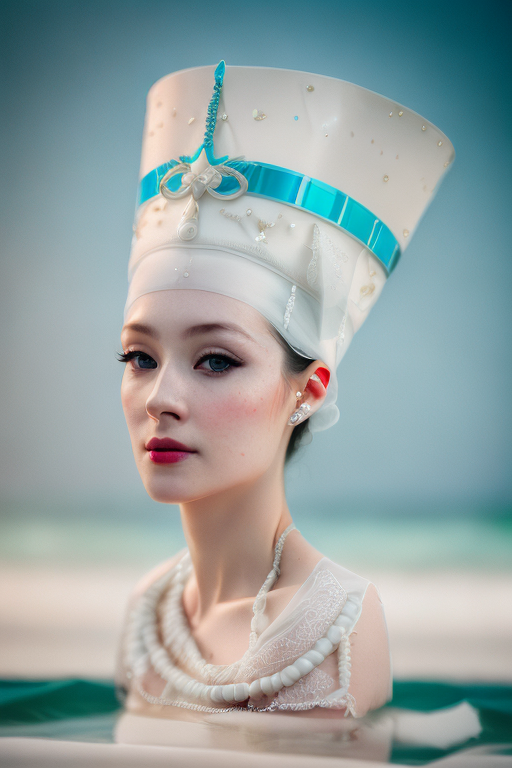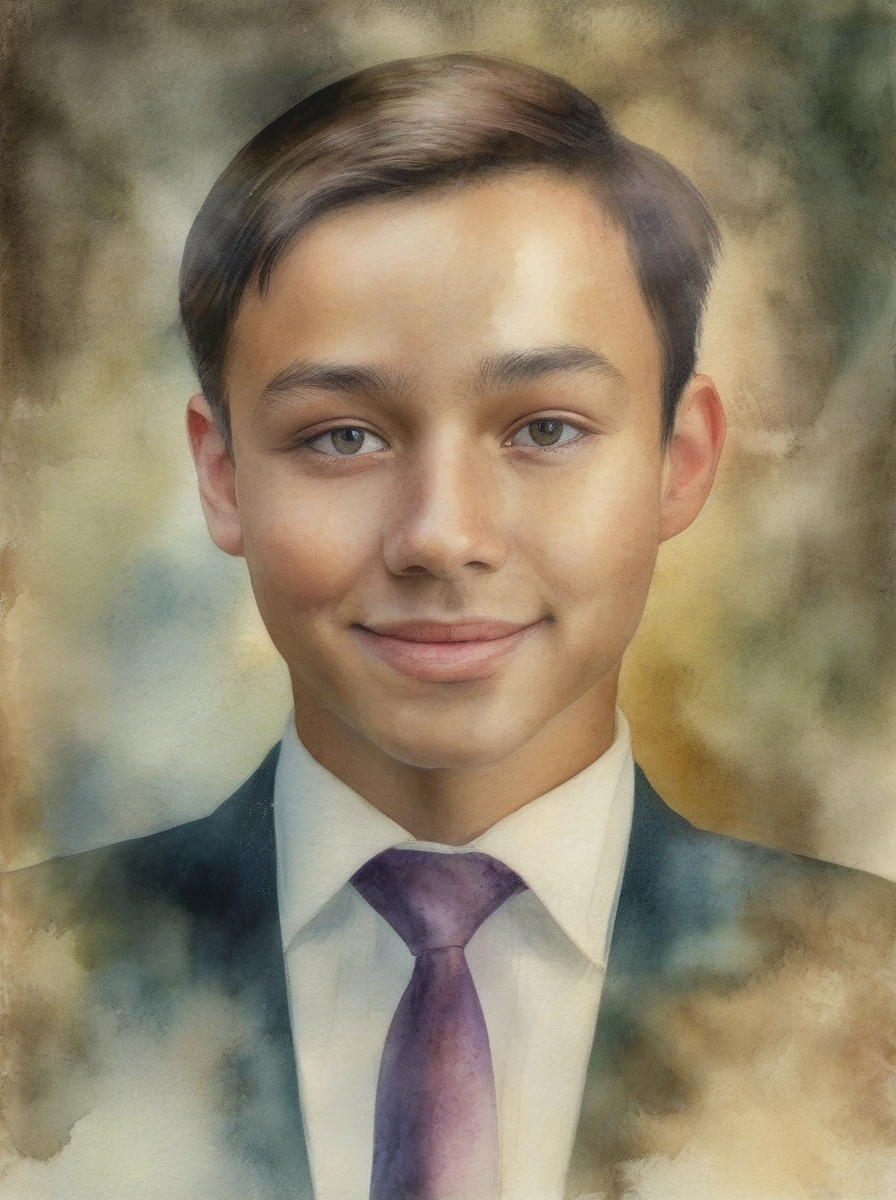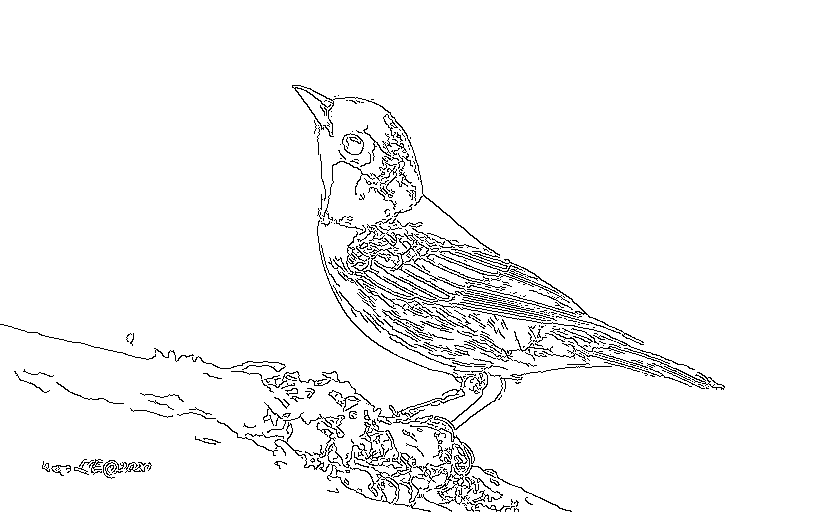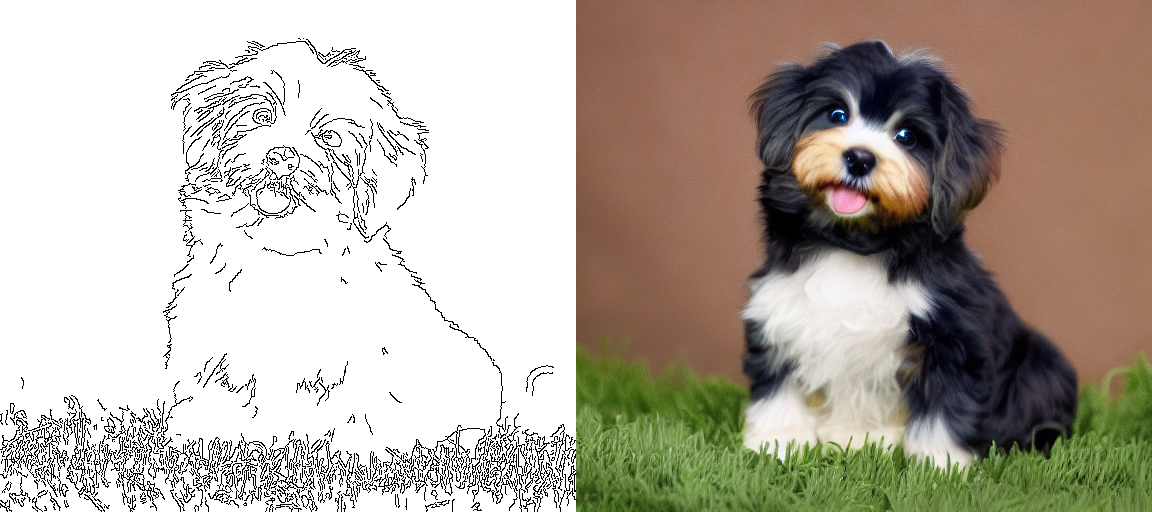controlnet-deliberate
Maintainer: philz1337x

787

| Property | Value |
|---|---|
| Model Link | View on Replicate |
| API Spec | View on Replicate |
| Github Link | No Github link provided |
| Paper Link | No paper link provided |
Create account to get full access
Model overview
controlnet-deliberate is a model that allows you to modify images using canny edge detection and the Deliberate model. It is maintained by philz1337x. Similar models include controlnet-hough, which uses M-LSD line detection, controlnet-v1-1-multi, which combines clip interrogator with controlnet sdxl for canny and controlnet v1.1 for other features, and controlnet-scribble, which generates detailed images from scribbled drawings.
Model inputs and outputs
controlnet-deliberate takes in an input image, a prompt, and various parameters to control the image generation process. It then outputs one or more images modified based on the provided inputs.
Inputs
- Image: The input image to be modified
- Prompt: The text prompt to guide the image generation
- Seed: The seed for the random number generator
- Scale: The scale for classifier-free guidance
- Weight: The weight of the ControlNet
- Additional Prompt: Additional text to be appended to the prompt
- Negative Prompt: Prompt to avoid certain undesirable image features
- Denoising Steps: The number of denoising steps to perform
- Number of Samples: The number of output images to generate
- Canny Edge Detection Thresholds: The low and high thresholds for Canny edge detection
- Detection Resolution: The resolution at which the detection method will be applied
Outputs
- One or more modified images based on the provided inputs
Capabilities
controlnet-deliberate allows you to generate images by combining an input image with a text prompt, while preserving the structure of the original image using canny edge detection and the Deliberate model. This can be useful for tasks like image editing, photo manipulation, or creating visualizations.
What can I use it for?
You can use controlnet-deliberate for a variety of image-related tasks, such as:
- Modifying existing images to match a specific prompt
- Creating unique and interesting visual art
- Generating images for use in presentations, publications, or other media
- Experimenting with different image generation techniques
Things to try
Some ideas for things to try with controlnet-deliberate include:
- Exploring the effects of different canny edge detection thresholds on the output images
- Combining the model with other image processing techniques, such as image segmentation or depth estimation
- Using the model to generate images for a specific theme or style
- Experimenting with different prompts to see how they affect the generated images
This summary was produced with help from an AI and may contain inaccuracies - check out the links to read the original source documents!
Related Models

controlnet-v1-1-multi

1
controlnet-v1-1-multi is a CLIP-based image generation model developed by the Replicate AI creator zylim0702. It combines ControlNet 1.1 and SDXL (Stable Diffusion XL) for multi-purpose image generation tasks. This model allows users to generate images based on various control maps, including Canny edge detection, depth maps, and normal maps. It builds upon the capabilities of prior ControlNet and SDXL models, providing a flexible and powerful tool for creators. Model inputs and outputs The controlnet-v1-1-multi model takes a variety of inputs, including an input image, a prompt, and control maps. The input image can be used for image-to-image tasks, while the prompt defines the textual description of the desired output. The control maps, such as Canny edge detection, depth maps, and normal maps, provide additional guidance to the model during the image generation process. Inputs Image**: The input image to be used for image-to-image tasks. Prompt**: The textual description of the desired output image. Structure**: The type of control map to be used, such as Canny edge detection, depth maps, or normal maps. Number of samples**: The number of output images to generate. Ddim steps**: The number of denoising steps to be used during the image generation process. Strength**: The strength of the control map influence on the output image. Scale**: The scale factor for classifier-free guidance. Seed**: The random seed used for image generation. Eta**: The amount of noise added to the input data during the denoising diffusion process. A prompt**: Additional text to be appended to the main prompt. N prompt**: Negative prompt to be used for image generation. Low and high thresholds**: Thresholds for Canny edge detection. Image upscaler**: Option to enable image upscaling. Autogenerated prompt**: Option to automatically generate a prompt for the input image. Preprocessor resolution**: The resolution of the preprocessed input image. Outputs Generated images**: The output images generated by the model based on the provided inputs. Capabilities The controlnet-v1-1-multi model is capable of generating a wide range of images based on various control maps. It can produce detailed and realistic images by leveraging the power of ControlNet 1.1 and SDXL. The model's ability to accept different control maps, such as Canny edge detection, depth maps, and normal maps, allows for a high degree of control and flexibility in the image generation process. What can I use it for? The controlnet-v1-1-multi model can be used for a variety of creative and practical applications, such as: Concept art and illustration**: Generate detailed and imaginative images for use in various creative projects, such as game development, book illustrations, or product design. Product visualization**: Create photorealistic product renderings based on 3D models or sketches using the depth map and normal map control options. Architectural visualization**: Generate high-quality architectural visualizations and renderings using the Canny edge detection and depth map controls. Artistic expression**: Experiment with different control maps to create unique and expressive artworks that blend realism and abstract elements. Things to try With the controlnet-v1-1-multi model, you can explore a wide range of creative possibilities. Try using different control maps, such as Canny edge detection, depth maps, and normal maps, to see how they affect the output images. Experiment with various prompt combinations, including the use of the "A prompt" and "N prompt" options, to fine-tune the generated images. Additionally, consider enabling the image upscaler feature to enhance the resolution and quality of the output.
Updated Invalid Date

controlnet-canny

803
The controlnet-canny model is a variation of the ControlNet family of AI models developed by Lvmin Zhang and Maneesh Agrawala. ControlNet is a neural network structure that allows diffusion models like Stable Diffusion to be controlled by adding extra conditions. The controlnet-canny model specifically uses Canny edge detection to modify images. This model can be compared to other ControlNet variants like controlnet-hough, controlnet-scribble, and controlnet-seg, each of which uses a different type of conditional input. Model inputs and outputs The controlnet-canny model takes an input image and a text prompt, and generates a new image that combines the content and structure of the input image with the semantics described in the text prompt. The input image is first processed using Canny edge detection, and this edge map is then used as a conditional input to the diffusion model alongside the text prompt. Inputs Image**: The input image to be modified Prompt**: The text prompt describing the desired output image Low Threshold**: The low threshold for Canny edge detection High Threshold**: The high threshold for Canny edge detection Outputs Image**: The generated output image that combines the input image's structure with the prompt's semantics Capabilities The controlnet-canny model can be used to generate images that preserve the structure of the input image while altering the contents to match a text prompt. For example, it can take a photograph of a building and generate an image of that building in a different style or with different objects present, while maintaining the overall shape and layout of the original. This can be useful for tasks like architectural visualization, product design, and creative concept exploration. What can I use it for? The controlnet-canny model and other ControlNet variants can be used for a variety of creative and practical applications. For example, you could use it to generate concept art for a video game, visualize architectural designs, or explore different stylistic interpretations of a photograph. The ability to preserve the structure of an input image while modifying the contents can be particularly valuable for tasks where maintaining certain spatial or geometric properties is important. Things to try One interesting aspect of the controlnet-canny model is its ability to selectively highlight or emphasize certain edges in the input image based on the Canny edge detection parameters. By adjusting the low and high thresholds, you can experiment with different levels of detail and focus in the generated output. This can be useful for emphasizing or de-emphasizing certain structural elements, depending on your desired artistic or design goals.
Updated Invalid Date

controlnet

7.2K
The controlnet model is a versatile AI system designed for controlling diffusion models. It was created by the Replicate AI developer rossjillian. The controlnet model can be used in conjunction with other diffusion models like stable-diffusion to enable fine-grained control over the generated outputs. This can be particularly useful for tasks like generating photorealistic images or applying specific visual effects. The controlnet model builds upon previous work like controlnet_1-1 and photorealistic-fx-controlnet, offering additional capabilities and refinements. Model inputs and outputs The controlnet model takes a variety of inputs to guide the generation process, including an input image, a prompt, a scale value, the number of steps, and more. These inputs allow users to precisely control aspects of the output, such as the overall style, the level of detail, and the presence of specific visual elements. The model outputs one or more generated images that reflect the specified inputs. Inputs Image**: The input image to condition on Prompt**: The text prompt describing the desired output Scale**: The scale for classifier-free guidance, controlling the balance between the prompt and the input image Steps**: The number of diffusion steps to perform Scheduler**: The scheduler algorithm to use for the diffusion process Structure**: The specific controlnet structure to condition on, such as canny edges or depth maps Num Outputs**: The number of images to generate Low/High Threshold**: Thresholds for canny edge detection Negative Prompt**: Text to avoid in the generated output Image Resolution**: The desired resolution of the output image Outputs One or more generated images reflecting the specified inputs Capabilities The controlnet model excels at generating photorealistic images with a high degree of control over the output. By leveraging the capabilities of diffusion models like stable-diffusion and combining them with precise control over visual elements, the controlnet model can produce stunning and visually compelling results. This makes it a powerful tool for a wide range of applications, from art and design to visual effects and product visualization. What can I use it for? The controlnet model can be used in a variety of creative and professional applications. For artists and designers, it can be a valuable tool for generating concept art, illustrations, and even finished artworks. Developers working on visual effects or product visualization can leverage the model's capabilities to create photorealistic imagery with a high degree of customization. Marketers and advertisers may find the controlnet model useful for generating compelling product images or promotional visuals. Things to try One interesting aspect of the controlnet model is its ability to generate images based on different types of control inputs, such as canny edge maps, depth maps, or segmentation masks. Experimenting with these different control structures can lead to unique and unexpected results, allowing users to explore a wide range of visual styles and effects. Additionally, by adjusting the scale, steps, and other parameters, users can fine-tune the balance between the input image and the text prompt, leading to a diverse range of output possibilities.
Updated Invalid Date

controlnet

57
The controlnet model, created by Replicate user jagilley, is a neural network that allows users to modify images using various control conditions, such as edge detection, depth maps, and semantic segmentation. It builds upon the Stable Diffusion text-to-image model, allowing for more precise control over the generated output. The model is designed to be efficient and friendly for fine-tuning, with the ability to preserve the original model's performance while learning new conditions. controlnet can be used alongside similar models like controlnet-scribble, controlnet-normal, controlnet_2-1, and controlnet-inpaint-test to create a wide range of image manipulation capabilities. Model inputs and outputs The controlnet model takes in an input image and a prompt, and generates a modified image that combines the input image's structure with the desired prompt. The model can use various control conditions, such as edge detection, depth maps, and semantic segmentation, to guide the image generation process. Inputs Image**: The input image to be modified. Prompt**: The text prompt describing the desired output image. Model Type**: The type of control condition to use, such as canny edge detection, MLSD line detection, or semantic segmentation. Num Samples**: The number of output images to generate. Image Resolution**: The resolution of the generated output image. Detector Resolution**: The resolution at which the control condition is detected. Various threshold and parameter settings**: Depending on the selected model type, additional parameters may be available to fine-tune the control condition. Outputs Array of generated images**: The modified images that combine the input image's structure with the desired prompt. Capabilities The controlnet model allows users to precisely control the image generation process by incorporating various control conditions. This can be particularly useful for tasks like image editing, artistic creation, and product visualization. For example, you can use the canny edge detection model to generate images that preserve the structure of the input image, or the depth map model to create images with a specific depth perception. What can I use it for? The controlnet model is a versatile tool that can be used for a variety of applications. Some potential use cases include: Image editing**: Use the model to modify existing images by applying various control conditions, such as edge detection or semantic segmentation. Artistic creation**: Leverage the model's control capabilities to create unique and expressive art, combining the input image's structure with desired prompts. Product visualization**: Use the depth map or normal map models to generate realistic product visualizations, helping designers and marketers showcase their products. Scene generation**: The semantic segmentation model can be used to generate images of complex scenes, such as indoor environments or landscapes, by providing a high-level description. Things to try One interesting aspect of the controlnet model is its ability to preserve the structure of the input image while applying the desired control condition. This can be particularly useful for tasks like image inpainting, where you want to modify part of an image while maintaining the overall composition. Another interesting feature is the model's efficiency and ease of fine-tuning. By using the "zero convolution" technique, the model can be trained on small datasets without disrupting the original Stable Diffusion model's performance. This makes the controlnet model a versatile tool for a wide range of image manipulation tasks.
Updated Invalid Date